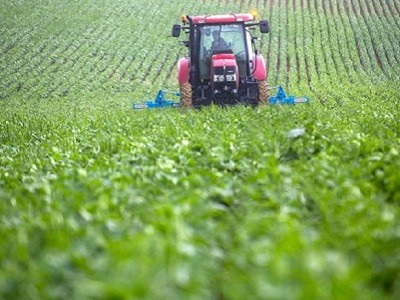Plants rich in a precursor to the vitamin could help to address deficiencies — but face a long road to market.
Heidi Ledford, 23 May 2022, Correction 24 May 2022
Gene-edited tomato plants that produce a precursor to vitamin D could one day provide an animal-free source of the crucial nutrient.
An estimated one billion people don’t have enough vitamin D — a condition that can contribute to a variety of health problems, including immune and neurological disorders. Plants are generally poor sources of the nutrient, and most people obtain their vitamin D through animal products such as eggs, meat and dairy.
When the gene-edited tomatoes, described in Nature Plants on 23 May1, are exposed to ultraviolet light in the laboratory, some of the precursor, called provitamin D3, is converted to vitamin D3. But the plants have not yet been developed for commercial use, and it is not known how they will fare when grown outside.
However, it is a promising — and unusual — example of using gene editing to enhance the nutritional quality of a crop, says plant biologist Johnathan Napier at Rothamsted Research in Harpenden, UK. It required an in-depth knowledge of tomato biochemistry. “You can only edit what you understand,” he says. “And it’s only because we understand the biochemistry that we’re able to make those sorts of interventions.”
Targeted changes
Gene editing is a technique that allows researchers to make targeted changes to an organism’s genome, and has been hailed as a potential way to develop better crops. Although genetically modified crops made by inserting genes into plant genomes must often go through an extensive review by governmental regulators, many countries have eased that process for crops with edited genomes — provided that the editing is relatively simple, and creates a mutation that could also have occurred naturally.
But there are relatively few ways to use that kind of gene editing to boost the nutrient content of a crop, says Napier. Although gene editing can be used to switch genes off in ways that are beneficial to consumers — for example, by removing a plant compound that could cause allergies — it is much harder to find situations in which mutating a gene will lead to the production of a new nutrient. “For actual nutritional enhancement, you have to step back a bit and think, how useful is this tool going to be?” says Napier.
Although some plants naturally produce forms of vitamin D, this is often later converted into chemicals that regulate the plant’s growth. Blocking the conversion pathway can cause an accumulation of the vitamin D precursor, but also leads to stunted plants. “That’s quite an important consideration if you want to make plants with high yields,” says plant biologist Cathie Martin at the John Innes Centre in Norwich, UK.
But solanaceous plants also have a parallel biochemical pathway that converts provitamin D3 into defensive compounds. Martin and her colleagues took advantage of this to engineer plants that produce provitamin D3: shutting down that pathway, they found, led to an accumulation of the vitamin D precursor without interfering with the plants’ growth in the laboratory.
The researchers will now have to determine whether blocking production of the defence compounds affects the tomatoes’ ability to handle environmental stress when grown outside the lab, says Dominique Van Der Straeten, a plant biologist at Ghent University in Belgium.
Weather-dependent
Martin and her colleagues plan to study this, and have been given permission to grow their gene-edited tomatoes in fields. The team also hopes to measure the impact of outdoor UV light exposure on conversion of provitamin D3 to vitamin D3 in the plants’ leaves and fruit. “In the UK, it’s almost destined to fail,” jokes Martin, in reference to the country’s notoriously rainy weather. She says that when she contacted a collaborator in Italy to ask if he could carry out the experiments under sunnier conditions, he replied that it would take him about two years to get regulatory permission.
If the tomatoes perform well in field studies, they could eventually join a limited list of nutritionally enhanced crops that are available to consumers. But the path to market is long and fraught with complications involving intellectual property, regulatory requirements and logistical challenges, cautions Napier. Golden rice — an engineered version of the crop that produces a precursor to vitamin A — has taken decades to move from the laboratory bench to the farm, and was only approved for commercial cultivation last year, in the Philippines.
Van Der Straeten’s laboratory is creating genetically modified plants that produce enhanced levels of multiple nutrients, including folate, provitamin A and vitamin B2. But she is quick to point out that such fortified crops would go only a small way towards addressing malnutrition. “It’s just one of the approaches with which we can help people,” she says. “Obviously it will take a combination of measures.”
doi: https://doi.org/10.1038/d41586-022-01443-2
UPDATES & CORRECTIONS
Correction 24 May 2022: An earlier version of this article misstated the name of the John Innes Centre. The text has now been corrected.
References
Li, J. et al. Nature Plants https://doi.org/10.1038/s41477-022-01154-6 (2022).
(Sources: Nature)














Đăng nhận xét